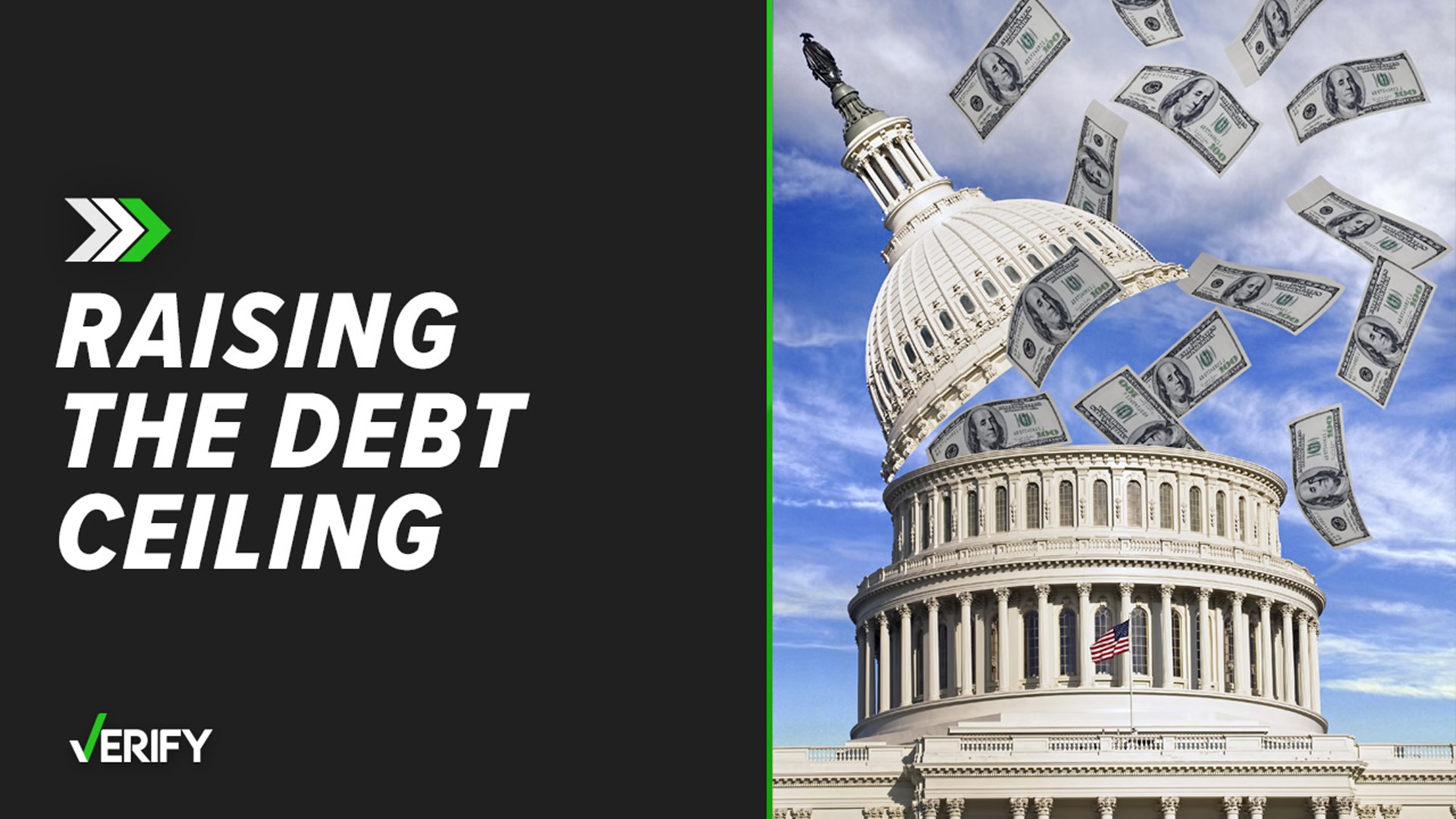Treasury Secretary Janet Yellen said the U.S. could default on its debt as soon as June 1, 2023, if Congress fails to raise or suspend the nation’s debt limit.
The United States hit its debt limit, also known as the “debt ceiling,” on Thursday, Jan. 19, prompting the Treasury Department to take “extraordinary measures” to keep paying the federal government’s bills.
Several readers like Ryan and Kathy reached out to VERIFY with questions about the debt ceiling, including when it was last raised and why it matters.
Here are VERIFIED answers to five key questions about the debt ceiling.
THE SOURCES
- U.S. Department of the Treasury
- Committee for a Responsible Federal Budget (CRFB)
- Congressional Research Service (CRS)
- Brookings Institution
- Bipartisan Policy Center
- Louise Sheiner, senior fellow in economic studies and policy director for the Hutchins Center on Fiscal and Monetary Policy at the Brookings Institution
- Kathleen Day, MBA, M.S., finance professor at the Johns Hopkins Carey School of Business and an author specializing in financial crises
WHAT WE FOUND
What is the national debt?
Before we answer what the debt ceiling is, we need to understand the national debt.
The national debt, which currently stands at approximately $31.5 trillion, is the amount of money the federal government has borrowed to cover expenses.
Kathleen Day, a finance professor at the Johns Hopkins Carey School of Business, described the national debt as the “accumulation of deficits over the years.”
A budget deficit is the result of the government spending more money than it receives in revenue from taxes and other sources in a given year. The Treasury then has to borrow money in order for the federal government to keep paying its bills.
What is the debt ceiling?
The current federal debt limit, also known as the debt ceiling, is $31.381 trillion.
But what exactly is the debt ceiling? It’s a limit imposed by Congress on how much money the federal government can borrow to meet its existing legal obligations. Those obligations include Social Security and Medicare benefits, military salaries, interest on the national debt, tax refunds and other payments, the Treasury Department says.
Increasing or suspending the debt limit doesn’t authorize new spending or cost taxpayers money, Treasury Secretary Janet Yellen wrote in a letter to Congress on Jan. 13, 2023.
The debt limit was established in 1917 by the Second Liberty Bond Act, according to the Committee for a Responsible Federal Budget (CRFB).
Before the debt ceiling was created, “debt was micromanaged by Congress, not the Treasury,” Louise Sheiner, an economics fellow with the Brookings Institution, explained.
More from VERIFY: Yes, House Republicans introduced a bill to create national sales tax, eliminate the need for the IRS
When was the debt ceiling last raised?
VERIFY reader Ryan asked if the debt ceiling was last raised during former President Barack Obama’s administration. The debt ceiling was actually raised more recently than that.
In December 2021, Congress passed legislation raising the debt ceiling by $2.5 trillion to its current limit of approximately $31.4 trillion.
Congress has raised the debt ceiling many times over the years under the leadership of both Democrats and Republicans.
Since the end of World War II, Congress has approved more than 100 separate changes to the debt ceiling, according to a November 2022 report from the Congressional Research Service (CRS). The debt ceiling has been raised 20 times since 2001.
“Increases in spending on old-age and retirement programs, lower tax receipts, and federal activities related to the Great Recession and in response to the COVID-19 pandemic have all contributed to rising debt levels,” CRS wrote in the report.
What happens when the U.S. hits the debt ceiling?
When the U.S. hits the debt ceiling, like it has in 2023, that doesn’t mean it will automatically default on its obligations like Social Security and Medicare benefits.
Though the Treasury can’t borrow more money once it hits the debt ceiling, it can implement what are called “extraordinary measures” to continue paying the federal government’s bills. The Treasury indicated that it began taking those measures on Jan. 19, 2023.
Those measures include things like putting a hold on contributions to government workers’ retirement funds, but replacing the money later, Sheiner explained. But these measures won’t impact the average American’s wallet on a day-to-day basis, she said.
“Extraordinary measures are really just ways of getting around the debt ceiling,” Sheiner said.
What could happen if Congress doesn’t suspend or raise the debt ceiling in time?
It’s unclear exactly what would happen if Congress doesn’t reach a deal on the debt ceiling in time and the Treasury runs out of cash-on-hand.
“[The Treasury is] basically faced with two sets of inconsistent laws: they cannot borrow, and they must make these payments – to interest payments, to Social Security beneficiaries, to the hospitals who are covering Medicare beneficiaries,” Sheiner said.
In the case of default, the federal government might have to miss or delay payments such as those for Social Security and Medicare beneficiaries and government workers’ salaries, Sheiner and Day explained.
The federal government “has not experienced a major default on its financial obligations since the War of 1812,” the Bipartisan Policy Center says.
If the federal government defaults on its obligations, financial experts like Day warn that it could have disastrous consequences.
A default would “ruin our reputation” in the global economy and the cost of borrowing at home would rise “astronomically,” Day said. It would likely cause the stock market to fall as well and potentially cost millions of jobs, she added.

